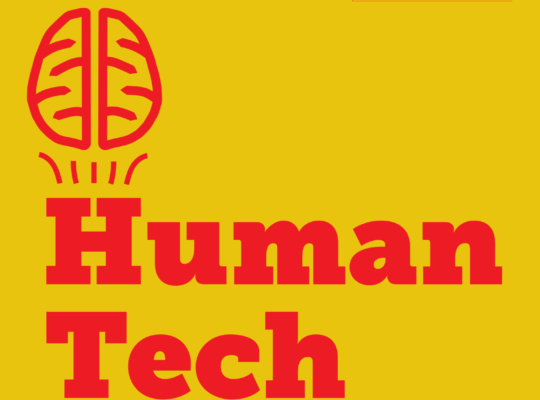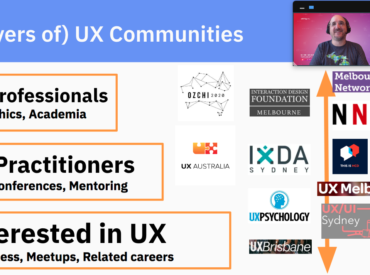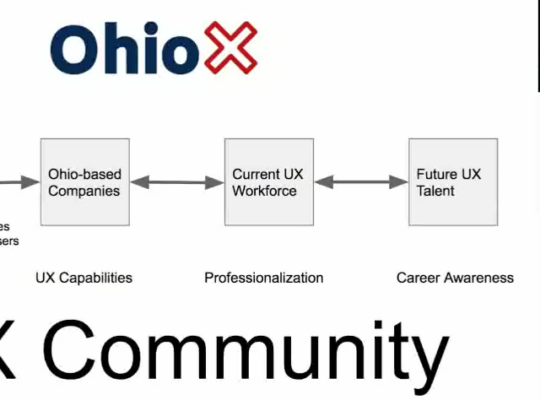I attended two InnovateOhio “AI Forums” the past month in order to listen to the conversations and start thinking about how UXers can foster a more humane artificial intelligence-driven economy/society in Ohio.
If you are not familiar with InnovateOhio, its main goal is to build a platform that enables better interactions with state services for residents. That means building out technical capabilities that deliver better user experiences. Other priorities are wider-ranging and more inclusive: “using technology to lift all Ohioans”, such as broadband strategy.
On July 19, I went to the OhioX-cohosted event (with InnovateOhio) at John Carroll University in Cleveland.
The comment I left on Chris Berry’s post about the Cleveland.com recap is my summary: I also liked the threads about finding ways to integrate AI-based solutions to make better experiences for customers, employees, and other users. There were also several mentions of the “human” skills required to make appropriate use of all of the various forms of technology: without critical thinking, for example, people are likely to create (negative) unintended consequences. Finally, I liked the examples where AI can help us be MORE human, such as enabling doctors to spend more time treating patients and helping teachers do better instruction.
The term “collaborative intelligence” was used in the introduction, which I like a lot. It has its roots in human-human collaboration (“we are smarter together”) and adds user-driven collaboration. This frames AI as a collaborative partner, not a replacement.
Next, on August 1, I drove to Cincinnati for another OhioX-cohosted session with a similar structure, but with different local experts and demos. See recaps from WLWT and Fagen Wasanni Technologies.
The comment I left on Pete Blackshaw’s post are my take-aways from the session: Despite “AI” in the title, I appreciated the focus on HUMAN intelligence. How to make us smarter using advanced technology. Being more efficient and solving business problems, also good to be able to do (money!). Most of all, the social challenges, like suicide prevention, that we are addressing.
(I missed the Columbus edition of the InnovateOhio panel, part of the OITA Innovation Summit on July 25.)
Across both events, I was impressed with the human-centered AI conversations (even if no one used that term from the Computer Science Human-Computer Interaction community). If you are not familiar with HCAI: “The advocates of Human-Centered AI promote human values such as rights, justice, and dignity. They seek to design, implement, and disseminate supertools that support human self-efficacy, creativity, responsibility, and social connections…The future will be shaped by those who support human autonomy, well-being, and control over emerging technologies.”
We have talked about human-centered AI in Ohio before (and once with a big data focus): let’s keep going.
The sessions also had good coverage of business transformation aspects.
And a lot of examples of “AI for good” and automation in historical contexts.
One Cincinnati panelist defined AI as “mimicking the human brain”. I disagree and prefer to think of AI as a different form of intelligence that complements our brains.
Also in Cincinnati, I had a good discussion while we were waiting for things to start. Someone else was talking about innovation in manufacturing, so I pointed out the differences between manipulating atoms at scale and manipulating bits at scale (software and data). To me, “bits vs. atoms” is what makes the information age and whatever comes after it different from the industrial age.
Finally, the follow-on set of questions during the sessions were about how Ohio can be a leader in AI. To me, that requires being a technology leader, a business leader, and a social leader so we have both economic success and social impact.
Thinking at a state level leads to challenges with designing the geography of emerging tech in the USA. Looking forward to helping figure out what the means for Ohio.







